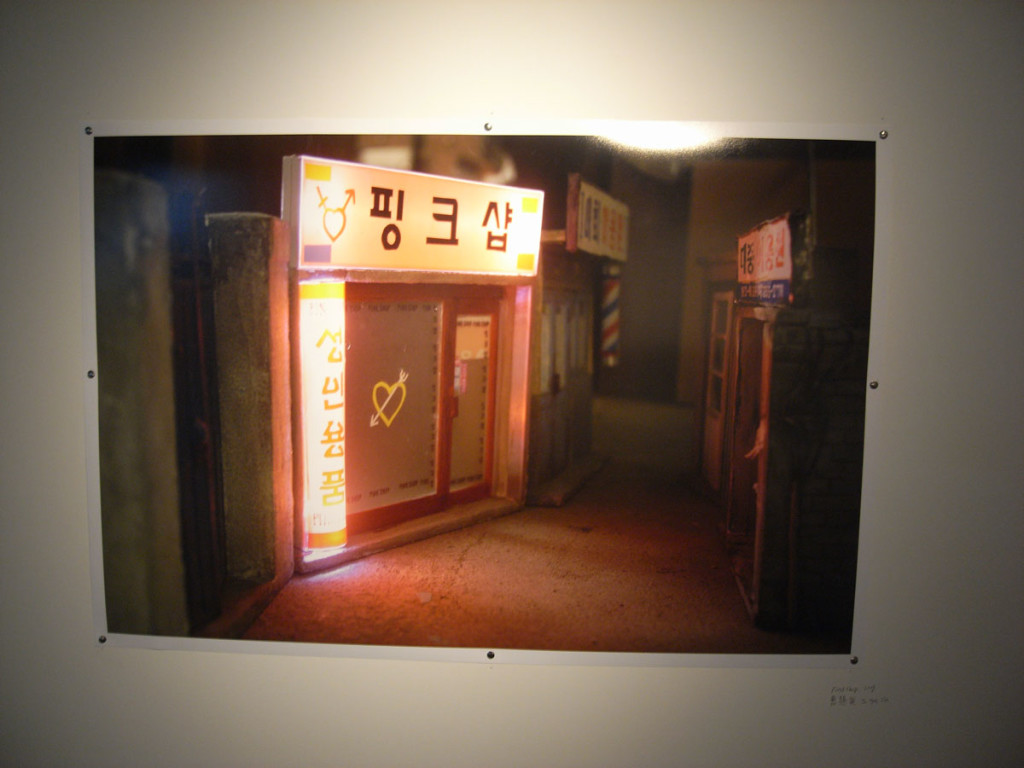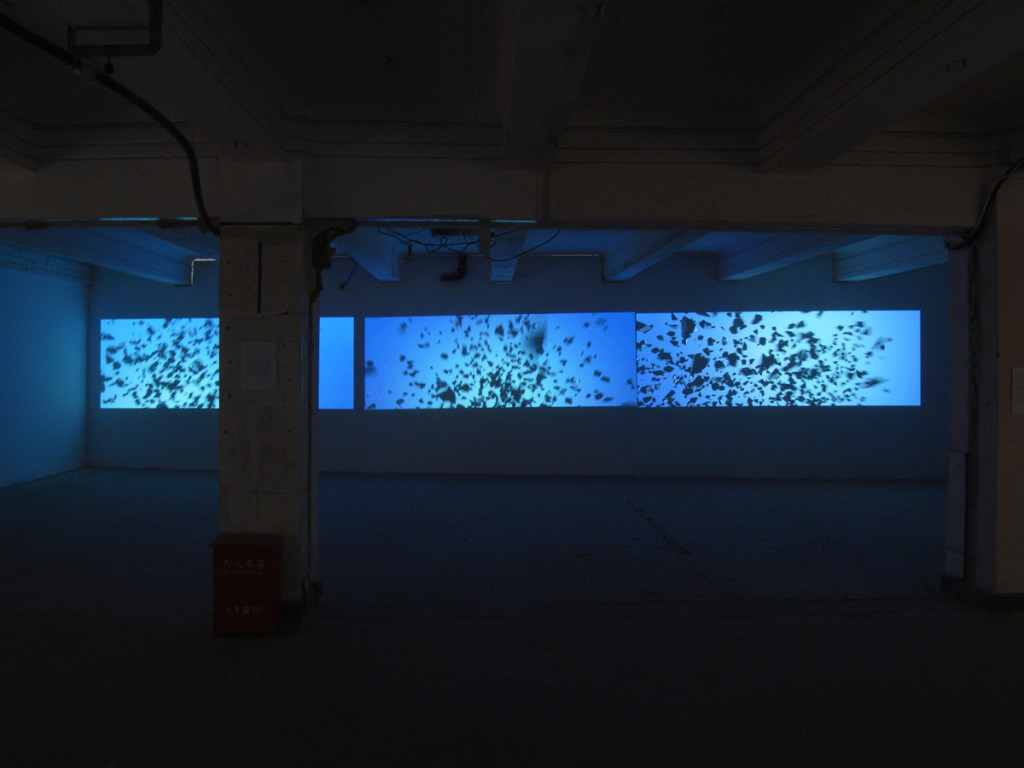(Nanjing East Road, Shanghai, September 2012 – March 2013)
The Daejeon City Pavilion featured the works of three Korean artists. I found it remarkable how the curator managed to put together three artists with a completely different background an still create a very coherent impression.
Choi Taeyoon is a US-Korean artist, who presented his anti-manifesto project. It investigates the recent “Occupy” protests and uses the environment and ideas that are being discussed in these circles as a material for further artistic interpretation. Choi was an active participant of the movement in New York, and his work spoke of dialogues and engagement, of personal stories and discussions. This provided authenticity and urgency to the ideas he was dealing with in his art.
The presentation took the form of wall drawings and a stack of books that featured Choi’s drawings, writings and documentation of installation artworks that have been created as a direct reaction of his engagement in the “Occupy” movement. The books where there for the people to read (or to steal), and a PDF of the book has been made available on-line as well (http://taeyoonchoi.com/antimanifesto/). The book was very consistent in presenting the artists ideas and I really liked it’s format. I highly recommend you to have a look at it.
 Jo Hyejin’s artworks touched on the topic of the city and its mundane small-size architectural elements that often go unnoticed. S/he created miniature models of common shop facades seen on the streets of Korean cities. The models have been partially created from construction material refuse. The work had a touch of nostalgia, referring to a urban design phenomenon that exists but goes unnoticed, even though each city inhabitant passes by or uses these shops daily. It made evident a kind of new ‘folk’ architecture created by city dwellers.
Jo Hyejin’s artworks touched on the topic of the city and its mundane small-size architectural elements that often go unnoticed. S/he created miniature models of common shop facades seen on the streets of Korean cities. The models have been partially created from construction material refuse. The work had a touch of nostalgia, referring to a urban design phenomenon that exists but goes unnoticed, even though each city inhabitant passes by or uses these shops daily. It made evident a kind of new ‘folk’ architecture created by city dwellers.
 Kang Hyonwook work was a three-screen projection of a digital 3D animation. The topics centered around the alienation building up in city dwellers: Anonymous urban architecture, which then “exploded” into pieces, first filling all of the sky an then clearing the horizon. It was a fantasy of empowerment, emerging from the mind of the artist as a reaction to the limits and boundaries of the urban environment.
Kang Hyonwook work was a three-screen projection of a digital 3D animation. The topics centered around the alienation building up in city dwellers: Anonymous urban architecture, which then “exploded” into pieces, first filling all of the sky an then clearing the horizon. It was a fantasy of empowerment, emerging from the mind of the artist as a reaction to the limits and boundaries of the urban environment.
 While both the media and the approaches taken by each of the artist were completely different, it all seemed to come together in relation to the current developments and issues of urban landscapes, especially in the Asian context. Choi focused mainly on the social dimension of urban relationships. Jo investigated the mundane elements of the Korean urban landscape. Kang interpreted the inner angst that many urban dwellers share.
While both the media and the approaches taken by each of the artist were completely different, it all seemed to come together in relation to the current developments and issues of urban landscapes, especially in the Asian context. Choi focused mainly on the social dimension of urban relationships. Jo investigated the mundane elements of the Korean urban landscape. Kang interpreted the inner angst that many urban dwellers share.
While many other city pavilions dedicated their exhibitions to one artist, or to a certain topic, or to a certain media, the Daejeon pavilion’s curator (Gim Jungi) skillfully managed to consider all of these aspects to bring together a selection that was both focused and accessible.
*
On a side note, I could of course point out the flaws of the installation – unaligned projection of Kang’s work, problematic light circumstances in Jo’s miniature sculptures, or the layer of dust settling on parts of Choi’s installation. But as mentioned in the previous posts related to the Shanghai Biennale 2012, this were universal issues that existed across all the show. So in my review, I tried to look beyond the surface – this had to be the approach if you wanted to enjoy some of the Shanghai Biennale 2012.